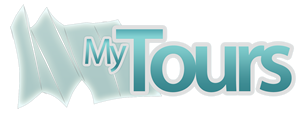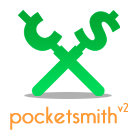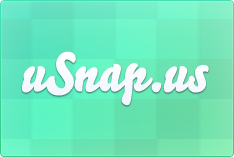In the first of our interviews with Webstock ’13 speakers, we talked with Clay Johnson. Clay has an impressive CV that touches on many aspects of 21st century life — our relationship to technology, our consumption of information and the way these relate to power and politics. He’s also giving what promises to be a unique and, yes, important workshop: How To Take Over Your Town.
Webstock: I want to focus on the workshop you’re giving at Webstock – ‘How to take over your town’. It’s an intriguing title!
So, firstly, what’s been your journey to get here. You’ve been involved in politics with the Howard Dean presidential campaign and with Blue State Digital. You’ve worked with the Sunlight Foundation on making government more transparent. And you’ve written a book, ‘The Information Diet’ about the (pretty poor) information we consume and how to improve that. How has all that lead to you wanting to take over the town?
Clay: I don’t want to take over the town. I want us to take over our towns. Or rather to take our towns from charged up political climates into friendly, innovative communities. All politics is famously local. Power, too, is local.
Our media environment, though, makes us pay attention to large, sexy, national or global issues — issues that we largely can’t do anything about. Here — I’ll ask you three questions. No Googling allowed:
1. Who is the president of the United States of America?
2. How has the child poverty rate in your city/town/community changed in the last year?
3. Which one of the outcomes of the above two questions are you most likely to have an impact on?
Now some may say “That’s not fair! It’s very important to know who the president is!” and they’re right. These aren’t mutually exclusive. But what if I replaced the first question with “Name a Kardashian?”
We — the technology community — have to start paying attention to our communities. Two billion dollars just got spent in the United States presidential election, largely raised from concerned americans who wanted to participate in the election in some way. Thousands of people knocked on doors, made phone calls, and asked for votes. Can you imagine what would happen if that effort and participation went into improving public schools, or heck, street sweeping?
Webstock: The workshop description includes the following line, “The future of government isn’t in the code of law, it’s in the code of software.” What do you mean by that?
Clay: Right now the establishment profession of power is the lawyer. They write the laws, make the rules, determine who follows the rules and how best they get followed. But as technology is famously eating the world, isn’t the developer on the rise? After all, the software developers at Facebook are, through software, creating governing law on our interactions — they’re creating rules in the system about how we can communicate.
I think it’s time to start thinking about this critically. And I think it’s time for developers to start thinking “Perhaps I can make a big difference by making some changes in the way my community works!”
Developers have a skill like no other profession: they can rewire society without having to wait on government to change.
Webstock: Who should attend this workshop and what will they learn?
Clay: The developer who wants to learn how to organize people. Above all else, what I’m going to teach you isn’t a political skill, it’s a critical skill about how to move people. Hopefully, you’ll take this skill — combine it with what you already know how to do, and make amazing things happen for your community. But heck, if you just want to use the skills I teach you to learn how to leverage the ideas from US Political Campaigns in your business — that’s fine too.
That’s going to be the first half of my workshop. The second half of my workshop is going to be about having a healthy information diet so that you can stay focused on making great things happen for you. By the end of my workshop, you’re going to have a system for dealing with incoming crap, and you’re going to leave Webstock with more time. Anybody who wants more time on their hands should come to my workshop.
Also, Nat Torkington. And the lesson that he will learn is that he should have given my book a five star rating on goodreads. He will learn that lesson “the hard way.”
Webstock: Changing tack a little, one of your blog posts that I loved was ‘How to focus’ And I even went so far as to try the Pomodoro Technique mentioned there. How has the “focusing” gone for you? We all know it’s one thing to write or think about focusing better, it’s another to actually put things into practice over a sustained period of time.
Clay: I must confess. Focusing has gotten a lot harder for me since my wife and I brought our son Felix into the world in July. I still need to child-proof my How to Focus technique.
But honestly, I still use that technique a lot. It’s intended to be sort of a recovery program: when you find yourself lost in a rut of things that are asking for your attention, having the focus technique available is the thing that gets you out of that rut and back on track. It works every time.
Webstock: What the one single thing you’d recommend to someone wanting to improve their information diet?
Clay: Write 500 Words, every day, before 8AM. Make it the first thing you do every morning. That way, you’re starting your day as a producer, rather than a consumer. And your whole day will revolve around you making things rather than reacting to things.
Webstock: And finally, what are you most looking forward to at Webstock?
Clay: I’ve heard so much about Webstock that I can’t even begin to anticipate what I’m looking forward to the most.
Webstock: Thanks so much so Clay! We’re looking forward to having you here in February.
See more about Clay’s workshop, How To Take Over Your Town. And then go register for it!
We’ve had a great response to the BNZ Start-Up alley, with nearly 30 companies entering. The range, scope and ambition of entrants has been extremely impressive — as convener of the selection panel, Nat Torkington, put it, “there’s been lots of companies entered I’d never heard about, but which are a long way along!”
And as much as we’d love to showcase everyone, there’s only room for the six finalists. So without further ado, here they are!
Educa

“Educa – helping parents stay connected with children’s early childhood learning. We are thrilled to be selected as one of the six finalists for the BNZ Start-up Alley. To see how Educa can benefit you, talk to us at Webstock 2012.”
Nathan Li — CEO
GoVocab

“GoVocab – Go Vocab is a new way to teach, learn and revise vocabulary. It’s fun and it makes sure you actually remember what you learn.”
Michael Dowse — GoVocab
Luumin

“Luumin – We are very excited at being selected for the BNZ Start-up Alley! What a fantastic way to start off 2012. We can’t wait to get to Webstock and share
the Luumin Social Productivity app with everyone.”
Harry Ferguson
My Tours

“My Tours – Webstock really pushes you to up your game in whatever you do and we are really looking forward to pitching in front of 500 of our peers for the BNZ Start Up Alley.”
Glen Barnes — Founder
Pocketsmith

“Pocketsmith – We’re thrilled at being selected as a finalist for the BNZ Startup Alley, and look forward to meeting our friends in the NZ startup community at Webstock!”
Jason Leong — Co-founder
uSnap.us

“uSnap.us – We’re thrilled to be selected as a finalist for the Startup Alley at Webstock and now we can show everyone attending and the judges why uSnap.us will be such an amazing product.”
Owen Evans — Co-Founder
Congratulations to these six finalists! We look forward to seeing them at Webstock.
Jennifer Brook is a resident of tree houses, a maker of limoncello, a cobbler of shoes, and one heckuva interaction designer. Jennifer is a lead user experience designer for Method. Prior to joining Method, Jennifer was interaction designer at The New York Times, where she designed the newspaper’s iPad and iPhone apps as well as several of the company’s web products. She’s teaching a Webstock workshop on rapid prototyping for the iPhone and iPad.
“Tapworthy” author Josh Clark sat down with Jennifer to talk about her path to touchscreen design, what it’s like to square off with Steve Jobs, the techniques newfangled designers can learn from old-fashioned books, and what she has in store for Webstock.
Josh: Like a lot of folks who come to digital design, your path wasn’t exactly a straight line. Where did you start in your career?
Jennifer: For the seven years after college, I focused on making books: letterpress printing, hand-binding, the whole nine yards. I got into making limited-edition letterpress artist books that have been collected by rare book libraries, museums, private collectors. And it was through bookmaking, which I see as a kind of interaction design practice, that I stumbled into what I’m doing now.
Books as interaction design, I like it! Here’s this ancient, centuries-old process of printing words and ideas, and now you’re someone who’s at the cutting edge of digital design. A lot of people would look at those worlds as being completely at odds.
I don’t see them as being at odds. There are a lot of similarities between bookmaking and digital interaction design. As a bookmaker, the way I approach my work is through this lens of an interplay between form and content. I typically start out with content, work through sketchbooks, and then start prototyping book forms. Before production, I have anywhere from 10-20 prototypes before a book would go into production.
The fundamental process of making a book: write, sketch, prototype, is almost identical to the process that I follow now.
Could you speak a bit more about how books are interactive?
Sure, well, a book is merely an inanimate object until someone opens it. Access to the content can’t happen until that first interaction happens. It’s all about hands and touch. Touch interfaces, ease of use, readability, portability, people have been working on these problems for hundreds of years through the form of the book.
It’s a highly evolved piece of technology that took centuries to get to a point where you don’t have to consciously think about the fact that it’s a complex piece of interaction design.
So as a bookmaker, I was interested in exploring these ideas, deconstructing the interaction, and exploring book forms where more interaction was necessary to unlock certain content. In all of the artist books that I’ve made, there is text that can’t be read unless someone does something in addition to just opening the book.
When I would make books, I would find myself watching people use my book prototypes to try to figure out ways to make them easier to use, or consider affordances to cue people that there was something more going on. I loved thinking about the intimacy of the form as a kind of play that would invite a deeper relationship between the content and the person.
Why did you make the jump to digital?
Learning about the history and the technology of the book was the gateway drug into wanting to be a part of something that was technologically relevant. Through making and researching books, I became interested in the idea of being at the edge of something, like when all of these different technologies—paper making, book binding, and printing—were at the edge and converging. This is what pushed me into switching the atmosphere of my practice from art and craft into design.
It was when I was living in a tree house, without an Internet connection, and for a period of time without electricity, when I started reading Fast Company and getting excited about what was happening online.
Okay, back up, we can’t let this pass. You lived in a tree house?
The tree house is a structure on a friend’s property in North Carolina. When I left my very first job, I retreated to said tree house for several months. Then I went and worked for some friends of mine who are weavers in Italy for several months for the winter. When I came back in the Spring, the friend and I decided we wanted to make the tree house bigger. So I drafted plans for an additional part and we hired a carpenter. For about four months, I worked on building the second part of this tree house, which I then lived in for several years after.
You’re drawn to the making of physical things.
I’m a builder.
Of books, of tree houses, and also of shoes, right?
Oh gosh, shoes, yes! As I started getting more and more involved in bookmaking and my work began to be collected, I would see my books go into special collection libraries, put behind glass boxes in exhibitions, and stowed away deep inside buildings, never to be handled again. I also observed that, because the books were perceived to be so precious, people were afraid to touch them. This was antithetical to why I wanted to make books. The possibility for a piece of artwork to be handled was, coming from an art school background where everything hangs on walls, the part I fell in love with.
Making shoes is a way to take the tools, materials, and processes I know and understand as a bookmaker, and using them in service of making a utilitarian object.
So you start off making art books in a tree house in North Carolina, and shortly after you find yourself working at New York Times Digital. How’d that happen?
In coming out as an interaction designer, I recognized that living in a tree house in the middle of North Carolina was like falling in love with marine biology while living in Kansas. My whole life became about getting to water as quickly as possible. New York, in this way, is my ocean.
And so I moved out of the tree house, found a mentor and just kind of put my head down on pursuing this one thing. When I finally moved to New York for the job at the Times, I was mentally prepared for it. And absolutely excited.
One of the things you’ll talk about at Webstock is how publishers are adapting to the post-PC (and post-print) era. They’re moving from the intimacy of the print era to the intimacy of the touchscreen. Are publishers in a way better suited than other industries to make this transition?
There’s definitely a fantasy that publishers have about what the iPad could be, and while many of their fantasies are about revenue, they have other possibilities in mind as well. I think some of their fantasies are around that connection that people have with the brand and how that could potentially extend to devices like the iPad or iPhone.
A real strength of analog technologies like magazines and newspapers is the opportunity to turn off and focus, and go more deeply into something. I believe there’s a need and a desire for human beings to have “off time.” There’s an opportunity there for digital designers to explore and solve these kinds of problems.
I’m interested in an idea that Mark Weiser coined and started writing about in the ’90s: the idea of “calm technology.” The central idea behind calm technology is that it should move into the periphery and away from being the center of our attention. Our smart phones and connected devices are still very much at the center of our attention, but I hope that over the next few years, this will start to change.
I’m personally interested in finding ways to allow technology to move to the periphery. It’s something I thought about when I went out to Cupertino to work on the first New York Times iPad prototype at Apple. I wasn’t thinking, “can this replicate the newspaper?” but rather, “can this app provide a kind of mental space for someone wanting to delve into long-form content?”
Do you think of the iPad differently from the iPhone in that respect?
Definitely. I don’t open my iPad up in line to check my email and see what’s new on Twitter. The iPad is usually not far from my bed or somewhere under the couch, and something I pick up here and there, not too frequently, but every couple of days. I personally think of it more as a domestic device, but that’s not to say that there aren’t these huge opportunities for the iPad in education, health care, and enterprise.
But if you look at the way Apple marketed the first iPad, it was through these giant advertisements of people laying on their couch with the iPad on their lap. And that was the marketing campaign for an entire year. That says a lot about how they were thinking about how the iPad would be used. That it’s exploding in all these other areas and that it is making it’s way into the workplace is a bit of a surprise. I definitely didn’t observe that when interviewing people the summer after the iPad came out.
When you went to Cupertino, it was two or three weeks before the iPad announcement. Your team was invited by Apple to hustle to build the New York Times iPad app to present onstage with Steve Jobs at the keynote announcement. You had the chance to interact a few times with Steve as he was vetting the app and giving you feedback. What did you learn from those experiences?
My colleagues and I had a rare and, in hindsight, amazing opportunity to meet and interact with Steve Jobs. We had one meeting in particular with him in the very beginning where we were invited to ask him questions about the iPad. One of the stories he told us was this: when the Industrial Revolution was first beginning, businesses and homes had one motor to run everything. As the technology matured and became cheaper, motors became ubiquitous. So now everything has a motor. There are hundreds of motors in our homes. He then made the connection between what happened with the ubiquity of motors, and what he predicted was going to happen with computers, where screens and sensors will pervade every corner of our lives, that every room in the house would have an iPad.
The most impressive part about meeting him was seeing how involved he was with everything to do with the launch. Our first full demo and critique was in front of him.
Yikes, I bet that was terrifying.
Yeah, we were a little bruised after that experience.
What is his manner in critique?
It’s unforgiving. I mean it’s everything you read about him. He didn’t mince words. He was brutally honest but invited that same kind of honesty in return. If we didn’t like something about the iPad we were told we could tell him. So it was a two-way street.
You got to critique Steve while he critiqued you. Speaking of critique and app-building, you’re doing a full-day workshop at Webstock. What will people get from the day?
It’s about quickly building app prototypes. One of the things people will get is a kind of religious zeal about looking at their designs on a device and as quickly as possible.
For the last fifteen years, web designers have been designing in the same context and with the same tools that their work will be seen and used. So, when you have a mouse in your hand, you’re thinking very clearly about mouse-click interactions. You’re designing using the same tools that the people using your designs will ultimately use. But when you’re designing on the desktop for a touch device, you’re not in the same frame of mind when your making decisions.
When designing for touch, we have to get our work on the device as soon as possible, and at every stage of the process. This kind of rigor will evolve our thinking about what’s possible and also poke holes early in some of the flawed thinking we might have because we’ve been designing on a desktop for a desktop.
Does that mean we have to use different tools, too, when we conceive and design apps?
The tools that we have available to us are not perfect. So there’s still a bit of fiction and storytelling we have to weave into our prototypes. And I don’t have definitive answers, but I do have some ideas.
I started teaching a class called “Designing for Touch” at Parsons New School for Design this past Fall. I was particularly impressed by one student who filmed all of the gestures available in his team’s game, and juxtaposed them with a keynote prototype of the game actions. He did this using very simple tools we all have access to.
So it wasn’t so much a pure on-device prototype but it was this proposal he put together that helped us all visualize and think about whether or not the gestures made sense and were intuitive.
It’s going to be the same deal in the workshop, right? You’re not just going to talk about this stuff. You’re going to put people to work.
I’m a taskmaster when it comes to workshops.
Concept videos are becoming more important in the prototyping process to help demonstrate gesture interactions. The smart folks at BERG are great examples of this. Do I have it right that you’ll be doing some video work in the workshop?
Yes, we will be making some tiny films as part of the workshop, what I like to call interaction sketches. One really incredible thing about using technologies like Keynote is you can very quickly make little videos that you can put on a device to get a sense of possible interactions.
There are a lot of parallels between film as a form and interaction design as a form. You have to think about time, movement. And there’s an emotion you can capture in a film that you can’t necessarily capture in an on-device prototype. So in the class I’ve been teaching, we did our touch prototypes first and then the students made a video about their product. It was fascinating to observe how much more clear and coherent their ideas came through in the video than in the on-device prototype.
Making and showing a video can convince people. It’s a believable medium. You can make an idea look very evolved in a video even if it’s held together by chewing gum and paperclips.
Webstock: Thanks so much Jennifer and Josh!
Find out about Jennifer’s workshop
Register to take part






